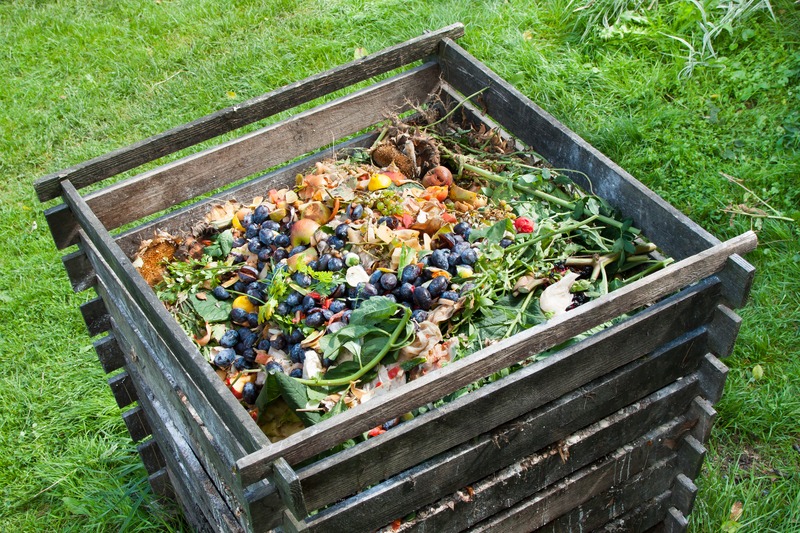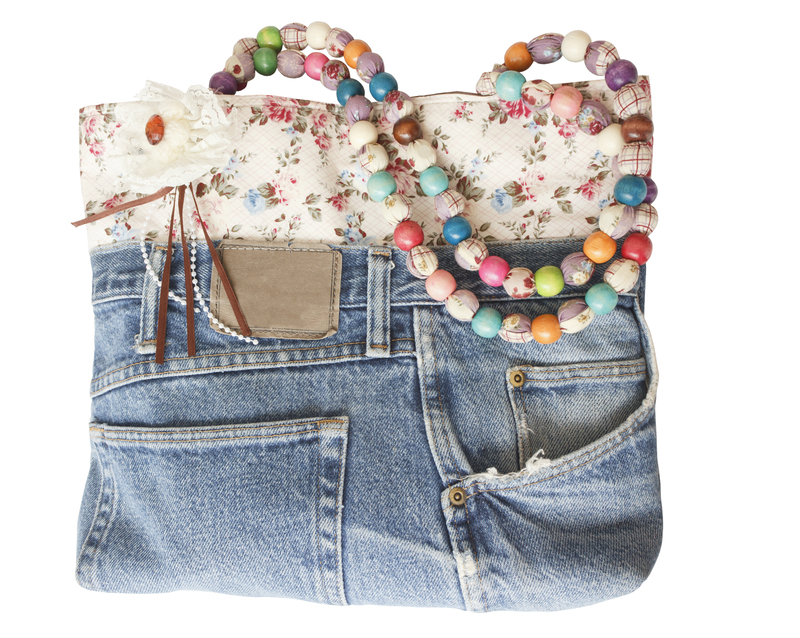Crafty Recycling: How to Engage Kids in Eco-Friendly Projects
Today's world faces ongoing environmental challenges that demand creative solutions, especially as society looks toward the future. Nurturing eco-conscious values in children is one way to make a positive impact. Crafty recycling projects not only teach kids about sustainability but also encourage imagination and problem-solving skills. This comprehensive guide dives into the many fun and educational ways to engage children in eco-friendly crafts that reuse and repurpose materials.
Why Involve Children in Recycling Projects?
Instilling environmental responsibility in children from a young age can shape their behaviors for a lifetime. Engaging kids in crafty recycling activities offers several benefits:
- Develops creativity and critical thinking
- Teaches the importance of waste reduction
- Improves fine motor skills and coordination
- Encourages teamwork and communication
- Transforms 'trash' into functional or beautiful creations
When children make something from discarded materials, they not only see the value in everyday items, but also learn about resource conservation and sustainability--key concepts in building a greener future.
The Power of Hands-On Learning
Research shows that experiential learning cements knowledge far better than passive methods. When kids participate in recycled crafts, they internalize the message of sustainability. It's not just about making art; it's about understanding how their choices affect the environment.

How to Start Crafty Recycling at Home
Starting eco-friendly projects at home is easier than many parents think. Here's a step-by-step guide to help you introduce crafty recycling to your children:
- Start with a Recycling Discussion: Explain what recycling means and why it matters. Make it relatable by talking about the items they use daily.
- Gather Recyclable Materials: Set up a box or bin specifically for clean, safe recyclables that are good for crafting (e.g., cardboard, plastic bottles, paper, fabric).
- Choose Age-Appropriate Crafts: Select projects that match your child's skill level and interests.
- Plan a Crafting Session: Set aside time and make it a fun, collaborative event--perhaps invite friends or do it as a family.
- Share the Story: As you create, talk about the origin of the materials and how reusing them helps the planet.
Setting a regular schedule for crafty recycling sessions builds anticipation and helps establish this as a rewarding routine.
What Materials Can Be Recycled for Craft Projects?
You'll be surprised at how many everyday items can be repurposed into creative masterpieces. Popular choices for recycled craft projects include:
- Cardboard boxes and tubes
- Plastic bottles and caps
- Glass jars
- Newspapers and magazines
- Greeting cards and paper scraps
- Old clothing, fabric, and buttons
- Tin cans
- Corks and jar lids
- Egg cartons
- Bottle tops
Remind children to clean and dry all materials before beginning any project. Encourage them to hunt for unique items around the house or ask neighbors for contributions!
Fun & Educational Recycled Craft Project Ideas
Below are some hands-on, eco-friendly project ideas for every age group. Each project not only encourages recycling, but also offers opportunities for learning, creativity, and fun.
1. Cardboard City
Encourage your child to build an entire city from old cardboard boxes, tubes, and scraps. Use markers, paints, and glue to create roads, buildings, cars, and even parks. This activity explores the concepts of planning, teamwork, and design.
2. DIY Bird Feeders
Use materials like milk cartons, toilet paper rolls, or plastic bottles to create bird feeders. Decorate them with non-toxic paints, hang them outside, and watch birds visit your homemade feeder. This project is excellent for teaching children about local wildlife and the importance of caring for urban animals.
3. Bottle Cap Mosaics
Collect plastic or metal bottle caps of different colors and sizes. Arrange them on a large piece of recycled cardboard to form beautiful mosaics--from abstract art to recognizable images like flowers or animals. This activity promotes pattern recognition, color matching, and patience.
4. Tin Can Planters
Upcycle tin cans into indoor or outdoor planters. Let kids decorate the cans with paint, stickers, or fabric scraps, then fill them with soil and plant seeds or small flowers. Not only does this highlight the benefits of reusing containers, but it also introduces children to basic gardening and biology.
5. Recycled Paper Beads
Transform old magazines or newspapers into vibrant beads. Roll strips into tight cylinders, secure with glue, and string them onto thread to make unique jewelry or decorations. Making paper beads teaches basic motor skills and the value of transforming paper waste into something fashionable.
6. Egg Carton Creatures
Cut up egg cartons and use them as the base for bugs, animals, or imaginary monsters. Add paint, googly eyes, pipe cleaners, and more. This playful project is great for younger children and encourages imaginative storytelling.
7. Magazine Collages
Provide old magazines, scissors, and glue sticks. Ask kids to create collages based on themes like 'nature', 'future cities', or 'our family'. This not only recycles paper but also sparks creativity around a central idea.
Tips to Make Eco-Friendly Arts and Crafts Successful
- Supervise Younger Children
Always supervise activities that require scissors, glue guns, or small parts that may pose a choking hazard.
- Focus on Fun, Not Perfection
Let creativity run wild! The goal is to explore and experiment rather than to create a perfect final product.
- Display Their Work
Honor your children's efforts by displaying finished crafts at home, gifting them to relatives, or sharing pictures online.
- Talk About Sustainability
Discuss the impact of recycling with your kids. Explain how these small steps can help the planet and why it matters to keep practicing eco-friendly habits.
- Encourage Upcycling
Go beyond traditional recycling by thinking of ways to improve or add value to old items with creativity.
Helping Kids Understand the Environmental Impact
While doing any recycled crafts project, make learning part of the process:
- Share Facts: For example, did you know that recycling one ton of paper saves 17 trees and over 7,000 gallons of water?
- Ask Questions: "What do you think would happen if we didn't recycle our bottles?"
- Connect to Bigger Picture: Show documentaries or read storybooks about recycling and its global effects.
Making these connections helps children grasp the importance of eco-friendly actions beyond the crafting table.
Crafty Recycling in Schools and Community Groups
The benefits of eco-friendly crafts multiply in a group setting. Consider organizing larger projects or workshops at schools, after-school programs, or local clubs. Most children love collaborating, and group projects can create impressive, lasting art (like a bottle cap mural for the whole school!).
- Encourage group challenges, like designing sculptures from plastic waste collected at school.
- Host recycled art competitions and display the entries for parents and the community.
- Partner with local businesses or waste management companies to donate crafting materials.
Engaging the wider community amplifies the positive environmental message and inspires even more children to see recycling as fun.

Making Crafty Recycling a Sustainable Habit
To ensure long-term engagement with eco-friendly crafts, try these strategies:
- Set Up Home Recycling Stations: Make separate bins for items you can reuse for crafts.
- Incorporate Recycling into Celebrations: Make gifts, party decorations, or costumes from recycled materials for holidays and birthdays.
- Create a Craft Journal: Let your child document each project with a photo and note about what materials were used and what was learned.
- Join Online Communities: Share your creations and find inspiration on social networks or online forums focused on green living and family activities.
- Teach by Example: Model eco-friendly habits by recycling, composting, and choosing products with minimal packaging.
Eco-Friendly Crafts for All Ages
The beauty of crafty recycling is its adaptability. Here are suggestions tailored to different age groups:
- Preschoolers: Stick to simple, hands-on projects like egg carton painting, paper plate animals, or making shakers from sealed bottles filled with beans or beads.
- Elementary Age: Try more involved crafts such as constructing models, paper bead jewelry, magazine collages, or tin can robots.
- Pre-Teens and Teens: Encourage challenging projects, like upcycling old T-shirts into tote bags, building birdhouses from scrap wood, or creating intricate mosaics.
When children grow older, let them take the lead in planning and inventing new eco-friendly projects.
Conclusion: Growing Green Minds Through Crafty Recycling
Incorporating crafty recycling projects into your family's routine is a fun, educational, and practical way to teach environmental stewardship. By turning waste into wonder, you inspire children to see the value in every object and empower them to make a difference, one craft at a time. Whether you're a parent, teacher, or community leader, helping kids embrace eco-friendly creativity lays the foundation for a more sustainable world.
Remember, every recycled project brings us one step closer to a healthier planet and a generation of thoughtful, resourceful young environmentalists. So gather your supplies--and start your next eco-friendly craft adventure today!